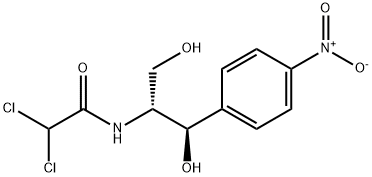b

Thank You!
Your requirement has been sent, we will contact you quickly!
Sent Failed!
Try again!
Product introduction:
Chloramphenicol, also known as chloramphenicol, is a broad-spectrum antibiotic produced by Streptomyces chloride, which can inhibit bacterial growth. Natural chloramphenicol is a levorotator (also known as levamycin). The synthetic product is white or yellowish needle or flake crystal, odorless, extremely bitter, slightly soluble in water, ether and chloroform, easily soluble in methanol, alcohol, acetone or ethyl acetate, insoluble in benzene and petroleum ether. It is relatively stable in neutral or weakly acidic aqueous solution and is easy to fail in case of alkali. The synthetic product is a racemic, also known as synmycin. Doxorubicin is a mixture of left-handed and right-handed chloramphenicol. Because dextrosomes have no antibacterial effect, the curative effect of doxorubicin is only half that of natural products. Chloramphenicol can inhibit Gram-negative bacteria and Gram-positive bacteria. It can be used to treat typhoid bacillary dysentery, urethral infection, pertussis, pneumonia, sepsis and other diseases. However, it is harmful to the liver. The method and dosage should strictly follow the doctor's advice. Palmitate of chloramphenicol is insoluble in water and tasteless when taken orally, also known as tasteless chloramphenicol. After ingestion, chloramphenicol is released by lipolysis and enzymatic hydrolysis through the small intestine. Tasteless chloramphenicol contains about 60% chloramphenicol, so the dose should be increased by 2 / 3. Especially suitable for children. Ointment containing 1% chloramphenicol can be used for the treatment of eye and skin infections. In agriculture, it is mainly effective for plant bacterial diseases, such as rice bacterial blight, strong internal absorption and safe for plants.
CAS:56-75-7
Molecular formula: C11H12Cl2N2O5
Molecular weight: 323.13
Structure: 
Appearance: White to grayish white crystalline powder
Product purpose: It is a broad-spectrum antibacterial antibiotic. It is the first choice for treating typhoid fever and paratyphoid fever. It is one of the special drugs to treat anaerobic infections, followed by the treatment of various infectious diseases caused by sensitive microorganisms. Due to serious adverse reactions, it is used less and less.

